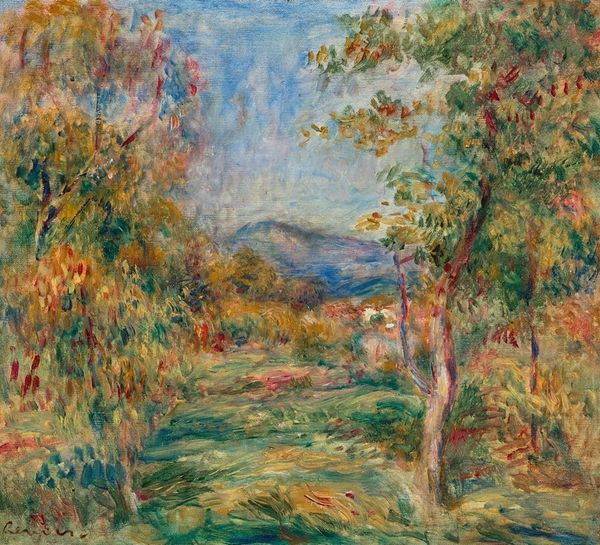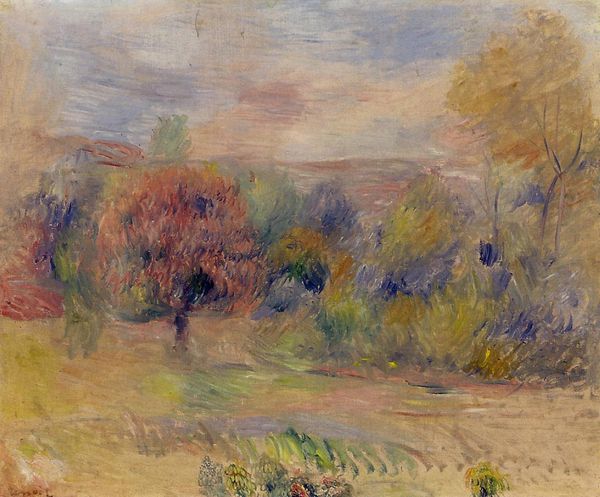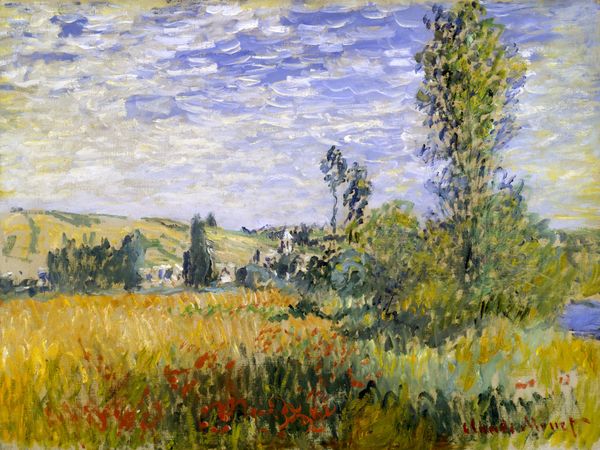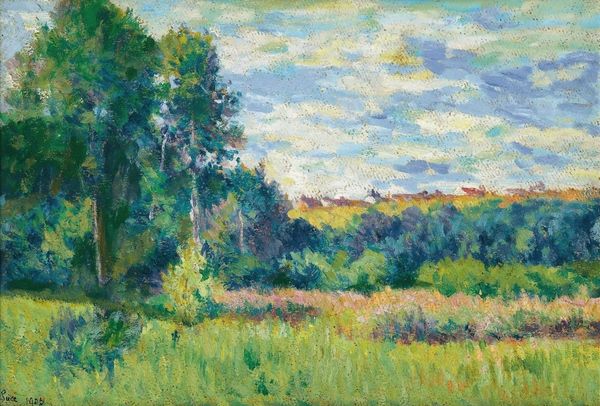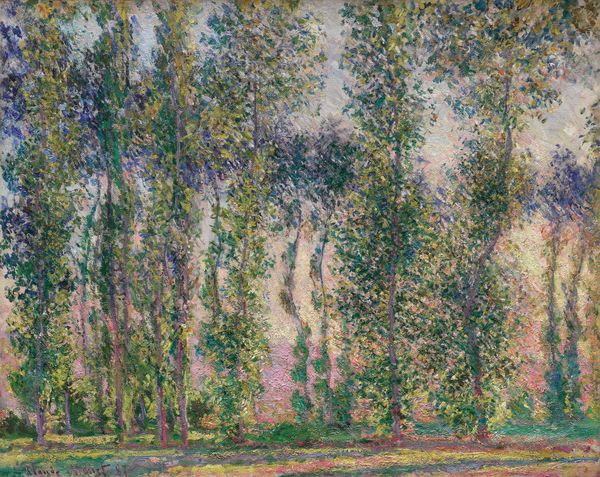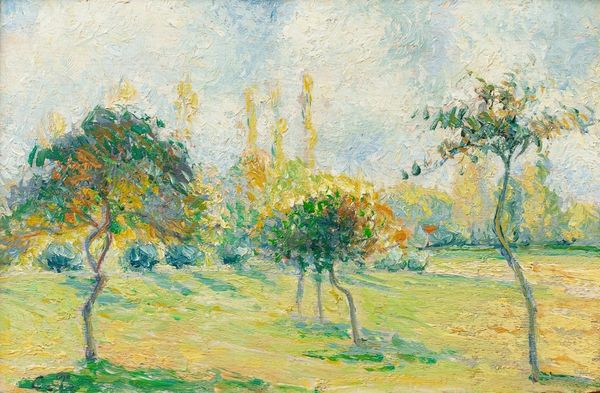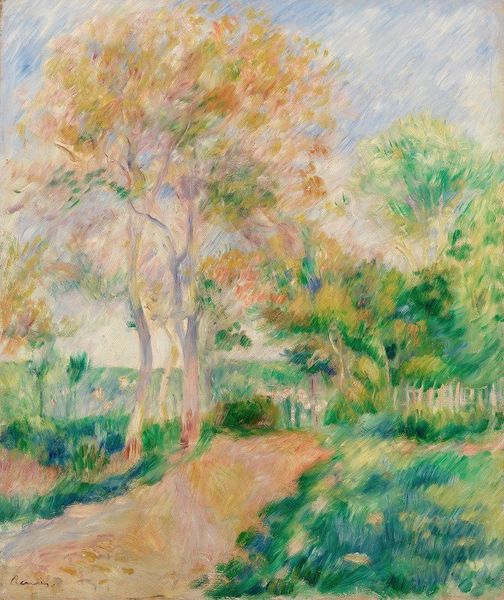
Copyright: Public domain
Curator: Let’s discuss Claude Monet's “Path at Varengeville," painted in 1882. What strikes you first about this landscape? Editor: Ah, Monet. Instantly, it’s that breezy, almost giddy feeling. All those dappled sunlight textures dancing across the path, it pulls me right into that summery day by the sea. Curator: Interesting. I'm particularly drawn to Monet's use of impasto in this work. Note the visible brushstrokes, building layers to depict texture, especially the grassy foreground and the foliage. It highlights his dedication to capturing immediate sensory experiences and atmospheric effects. The materiality really informs our reading of the scene, don't you think? Editor: Absolutely. You can practically feel the rough texture of the grass, smell the salt air. And it's funny, but I find myself wondering what it was like for Monet lugging his paints out to that exact spot. Imagine his whole production, standing out there en plein air as they call it, battling bugs. It's so different from artists working inside the studio! Curator: Indeed, the practice of "en plein air" was pivotal, and Monet industrialized that whole operation; he considered painting outside essential to the truthfulness of Impressionism. Monet sought out these coastal landscapes and that meant that his assistants hauled equipment and the whole project became quite elaborate in itself. What about the color relationships? Editor: Those blues popping through! Monet’s rendering the water, barely a sliver there on the horizon between the trees but he balances the entire composition with those bits of sky. There's this romantic almost transcendent glow, despite its seeming casualness. Like the world’s exhaling pure joy. Curator: I find the contrast between the seemingly haphazard brushstrokes and the actual calculation it took to achieve this “impression” quite fascinating. There's a real tension there. That balance between intuition and labor becomes very intriguing when thinking of how he mass produced works toward the later part of his life. Editor: Mass produced maybe but each unique, no? Ultimately, though, standing here, I forget about the mechanics. It’s pure invitation – “come walk with me on this sun-drenched path.” I swear I can feel the earth under my feet. Curator: Precisely! A testament to the immersive power of his process, that brings nature's energy and social impact straight back to the viewer even today. Editor: Yes, and also, to the quiet moments of connection that paintings offer, it can carry that shared energy even now.
Comments
No comments
Be the first to comment and join the conversation on the ultimate creative platform.
